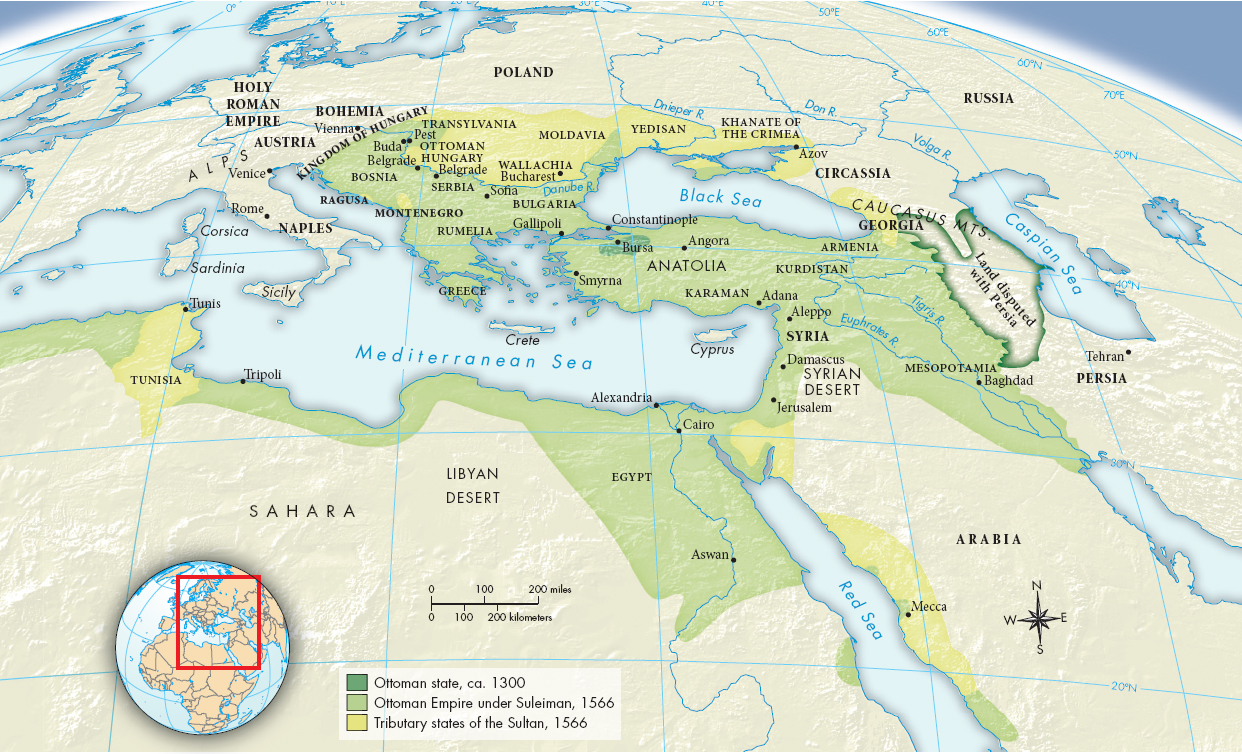The Growth of the Ottoman Empire
The Ottomans came out of Central Asia as conquering warriors, settled in Anatolia (present-

The Ottoman Empire was built on a unique model of state and society. Agricultural land was the personal hereditary property of the sultan, and peasants paid taxes to use the land. Thus, there was an almost complete absence of private landed property and no hereditary nobility.
The Ottomans also employed a distinctive form of government administration. The top ranks of the bureaucracy were staffed by the sultan’s slave corps. Because Muslim law prohibited enslaving other Muslims, the sultan’s agents purchased slaves along the borders of the empire. Within the realm, the sultan levied a “tax” of one thousand to three thousand male children on the conquered Christian populations in the Balkans every year. These young slaves were raised in Turkey as Muslims and were trained to fight and to administer. The most talented Ottoman slaves rose to the top of the bureaucracy, where they might acquire wealth and power. The less fortunate formed the core of the sultan’s army, the janissary corps. These highly organized and efficient troops gave the Ottomans a formidable advantage in war with western Europeans. By 1683, service in the janissary corps had become so prestigious that the sultan ceased recruitment by force, and it became a volunteer army open to Christians and Muslims.
The Ottomans divided their subjects into religious communities, and each millet, or “nation,” enjoyed autonomous self-
Istanbul (known outside the empire by its original name, Constantinople) was the capital of the empire. The “old palace” was for the sultan’s female family members. The newer Topkapi palace was where officials worked and young slaves trained for future administrative or military careers. Sultans married women of the highest social standing while keeping many concubines of low rank. To prevent the elite families into which they married from acquiring influence over the government, sultans procreated only with their concubines and not with official wives. They also adopted a policy of allowing each concubine to produce only one male heir. At a young age, each son went to govern a province of the empire accompanied by his mother. These practices were intended to stabilize power and prevent a recurrence of the civil wars of the late fourteenth and early fifteenth centuries.
Sultan Suleiman undid these policies when he boldly married his concubine, a former slave of Polish origin named Hürrem, and had several children with her. (See “Individuals in Society: Hürrem.”) Starting with Suleiman, imperial wives began to take on more power. Marriages were arranged between sultans’ daughters and high-
>QUICK REVIEW
What were the commonalities and differences between the development of absolutism in the Russian and Ottoman Empires?